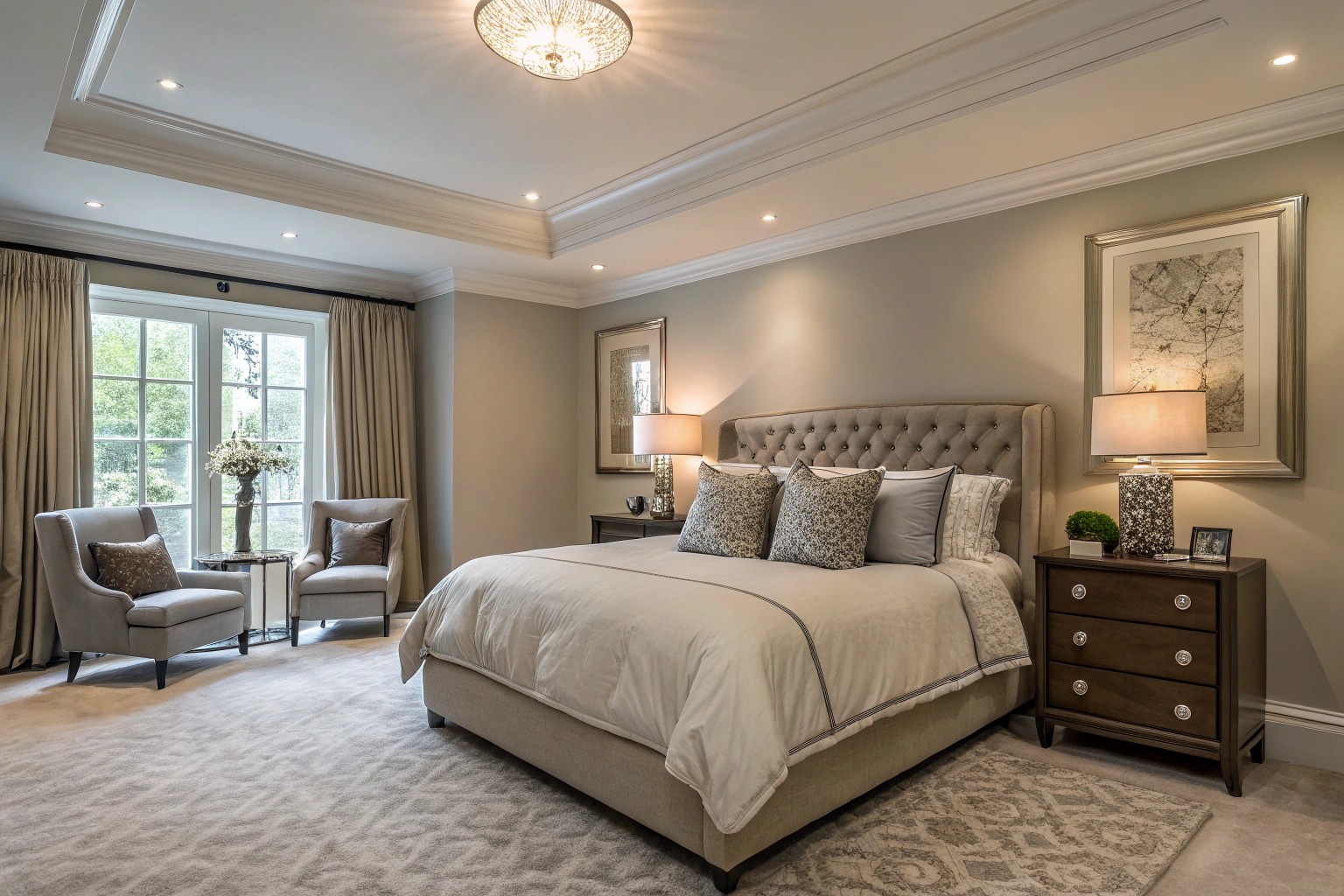As someone who has witnessed the evolution of this movement firsthand, I’ve seen how spaces that whisper their sophistication often speak most eloquently to those who inhabit them. This design philosophy celebrates craftsmanship, quality materials, and thoughtful restraint—creating environments that feel both timeless and deeply personal.
Understanding the Essence of Quiet Luxury

Quiet luxury, often called “stealth wealth” in design circles, represents a shift away from logo-driven, overtly branded spaces toward those defined by subtle sophistication and genuine quality. It’s not about spending less—it’s about investing wisely in elements that matter.
Compared to traditional luxury’s emphasis on showiness, quiet luxury champions subtlety. It trades bold ornamentation and bright accents for muted tones, clean lines, and a discreet sense of opulence derived from exquisite materials and well-chosen investment pieces.
This approach values craftsmanship, sustainability, and enduring style over fleeting trends, creating spaces that feel calm, personalized, and distinctly sophisticated.
The Core Principles of Quiet Luxury Design
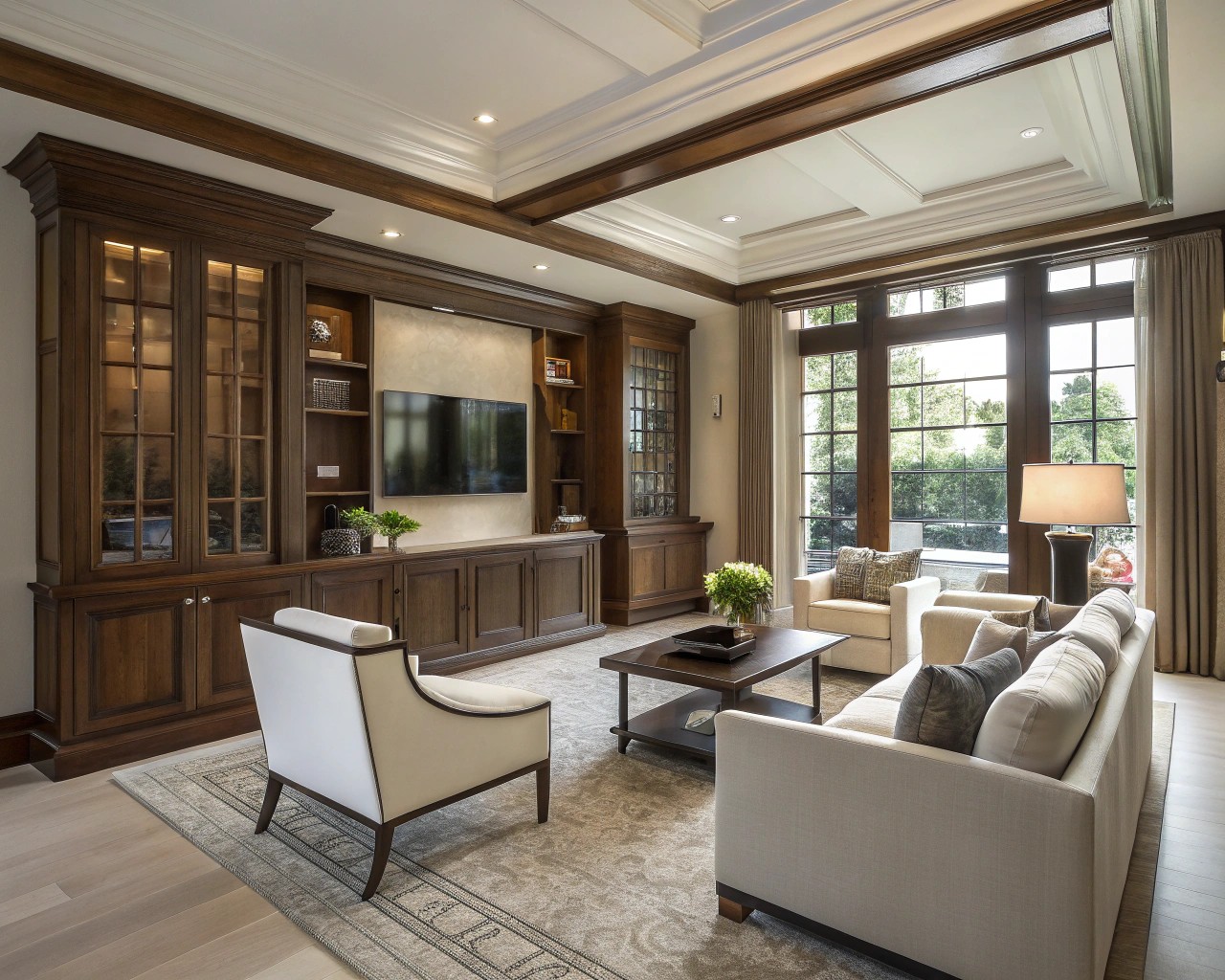
From my experience working with clients seeking this aesthetic, several principles consistently emerge:
- Quality over quantity – Fewer, better pieces rather than numerous mediocre ones
- Craftsmanship as centerpiece – Celebrating the artistry behind each element
- Materiality matters – Using authentic, high-grade materials that age beautifully
- Restraint in palette – Employing limited, cohesive color schemes
- Thoughtful detailing – Including subtle elements that reward closer inspection
- Visual calm – Creating spaces free from unnecessary visual noise
The Key Elements That Define Quiet Luxury Interiors
Soothing Color Palettes
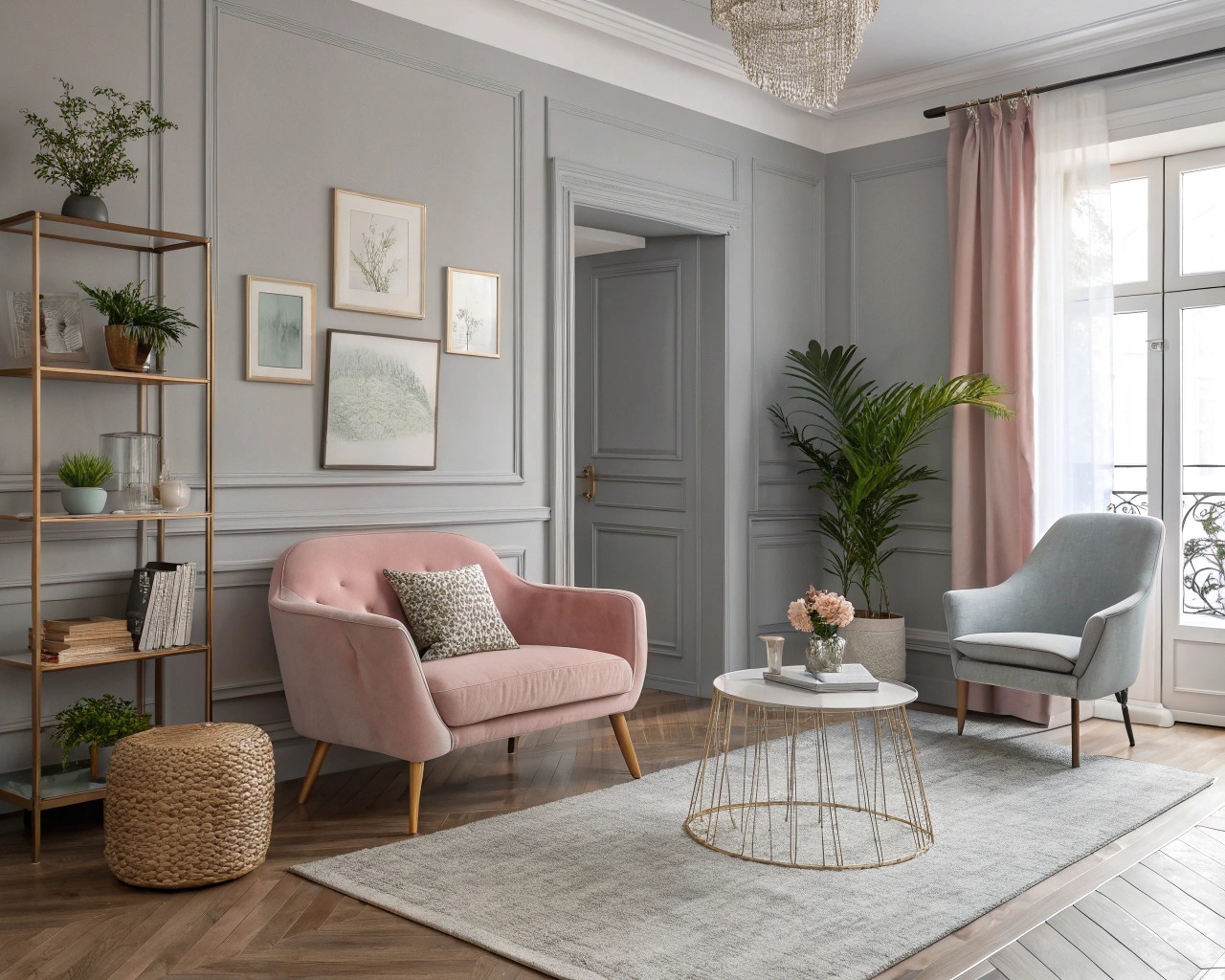
The foundation of quiet luxury begins with color. The palette is dominated by neutral tones like beige, cream, taupe, and soft greys. As an example, Pantone’s 2025 Color of the Year, Mocha Mousse, a rich warm brown, strongly reinforces this aesthetic.
When selecting your palette, consider these groupings:
| Color Family | Primary Tones | Accent Possibilities | Best Used In |
|---|---|---|---|
| Warm Neutrals | Oatmeal, Camel, Warm Taupe | Terracotta, Rust | Living areas, Bedrooms |
| Cool Neutrals | Soft Grey, Greige, Mist | Slate Blue, Sage | Bathrooms, Studies |
| Earth Tones | Mocha, Clay, Stone | Bronze, Olive | Dining rooms, Libraries |
| Soft Whites | Ivory, Alabaster, Vanilla | Cream, Soft Gold | Throughout for continuity |
High-Quality Materials
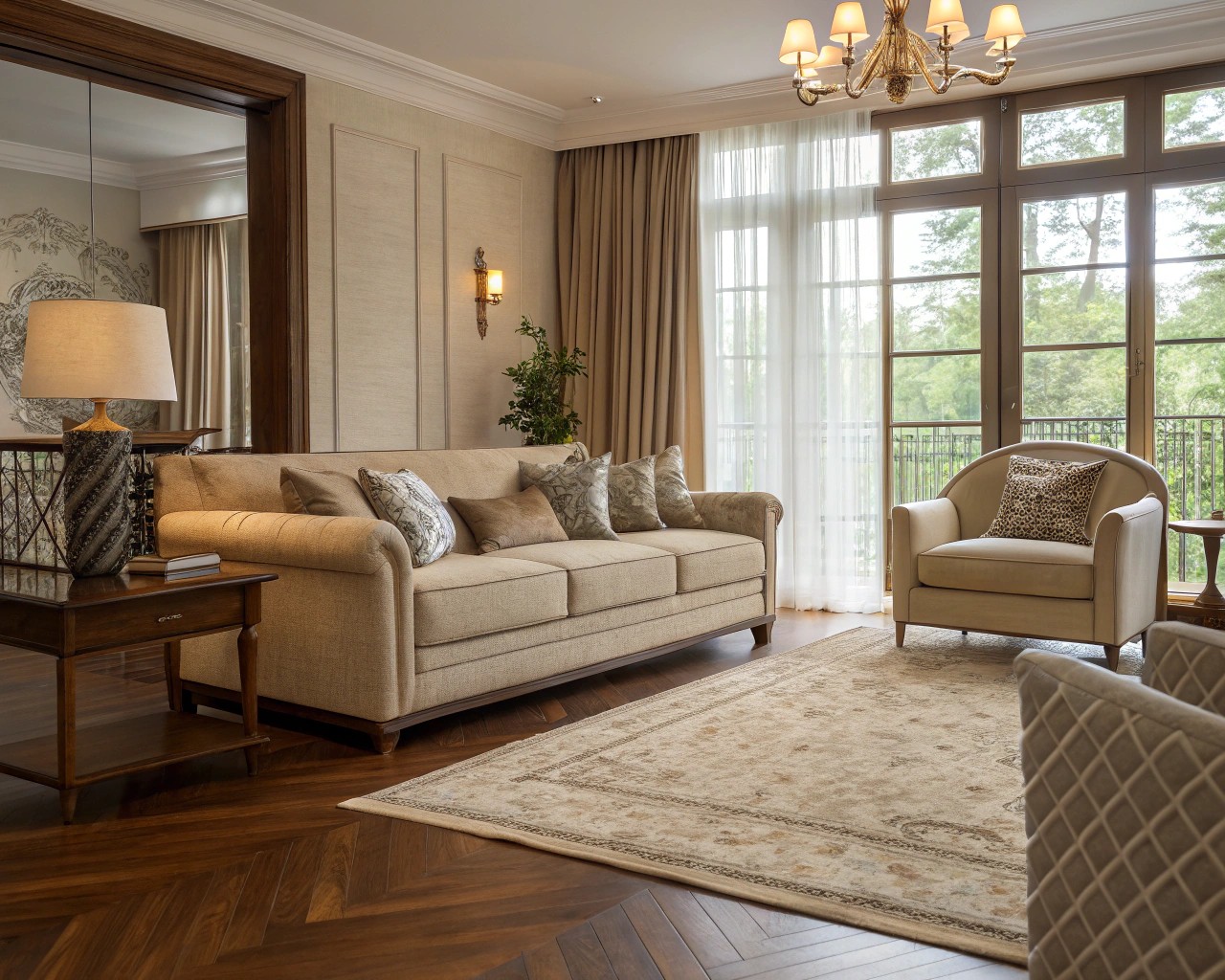
In my practice, I’ve found that clients initially drawn to the quiet luxury aesthetic often underestimate the importance of material selection. The right materials communicate quality without announcing it.
The essence of this style involves celebrating high-quality materials and thoughtful details. It aims for a soft, relaxed atmosphere that steers clear of loud colors or excessive decoration.
Focus on these materials for maximum impact:
- Natural stone – Particularly honed marble, limestone, and travertine
- Real wood – Oak, walnut, and ash with subtle grain patterns
- Premium textiles – Linen, cashmere, wool, and high-thread-count cotton
- Artisanal glass – Hand-blown or cast glass with subtle imperfections
- Noble metals – Brushed brass, blackened steel, and unlacquered bronze
Quiet Luxury Across Different Spaces
Creating a Quietly Luxurious Living Room
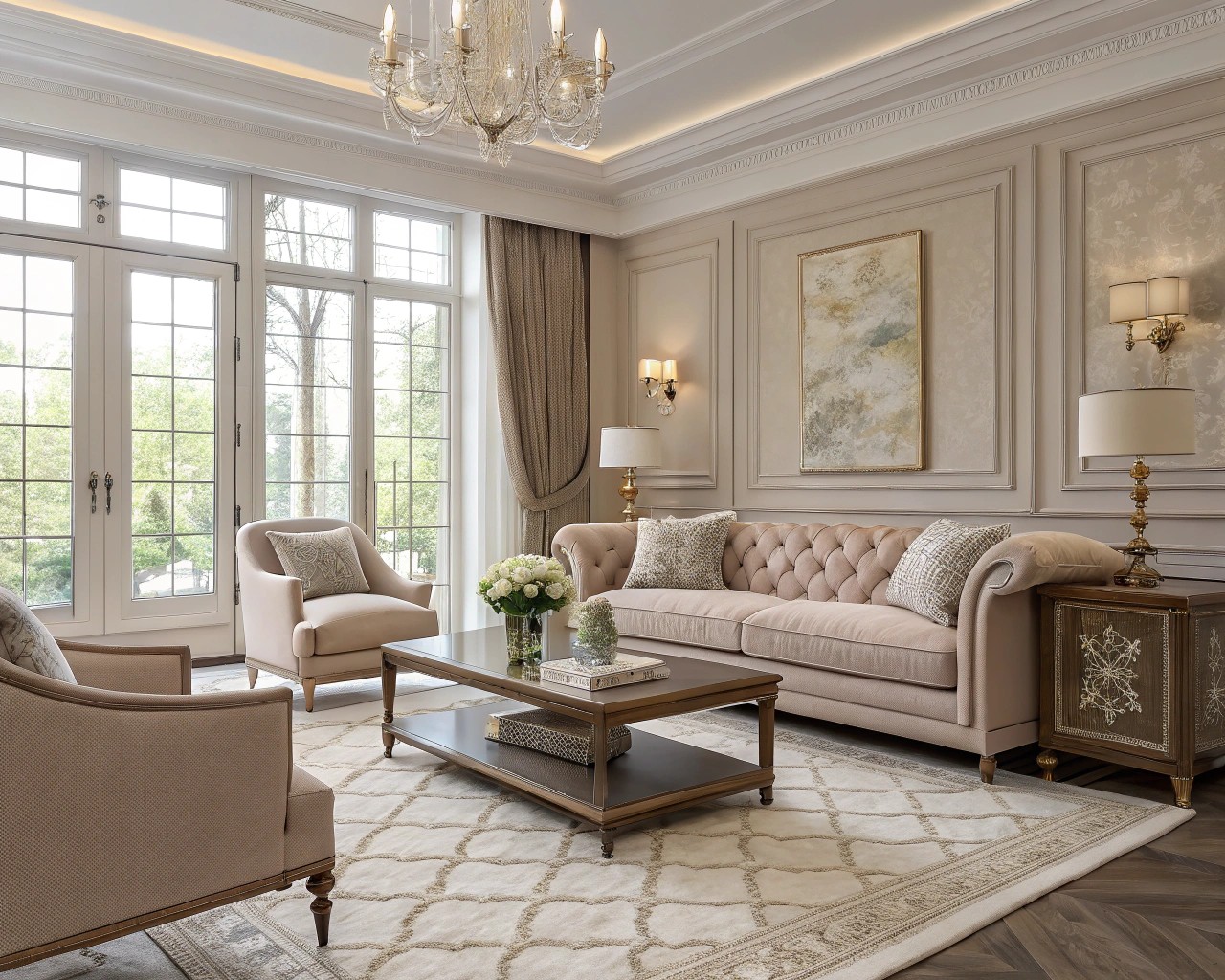
The living room often serves as the showcase for this design philosophy. One client’s space perfectly illustrates this approach: “Baker’s Anton sofa, matching armchairs from Dmitriy & Co in a Rubelli textile and a Lorae lounge chair from The Bright Group gather around a coffee table from Lawson-Fenning in the luxury living room. A Ross Gardam Nebulae chandelier from Studiotwentyseven hangs above a rug from Truett Fine Carpets & Rugs”.
When designing living rooms, I recommend:
- Investing in one exceptional sofa with perfect proportions
- Choosing coffee tables with interesting materiality but simple forms
- Adding dimension through varied textures rather than patterns
- Selecting art that complements rather than dominates
- Incorporating lighting that creates atmosphere, not just illumination
The Quiet Luxury Bedroom Sanctuary

In bedrooms, quiet luxury should manifest as both visual and tactile comfort. One exemplary space features elements like Oskar Zięta’s glamorous, organic stainless-steel mirror sculpture, Tafla 03, paired with a custom Magni Home Collection bed and bench, and grounded by a wool-and-silk rug from International Flooring, creating a sophisticated and serene atmosphere.
For bedrooms, focus on:
- Premium bedding with minimal or no visible patterns
- Bedframes with subtle detailing and perfect proportions
- Thoughtfully designed nightstands with considerations for daily rituals
- Lighting that transitions from functional to atmospheric
- Window treatments that control light while adding textural interest
Dining Rooms That Embody Refined Restraint
Dining rooms can achieve a sophisticated statement and embody quiet luxury through carefully chosen pieces. For instance, pairing distinctive Cubé chairs from Morada-Haute Furniture Boutique with an elegant E.M. Soberon table and chandelier exemplifies this approach, communicating luxury without overwhelming the space.
When I design dining spaces for clients seeking quiet luxury, we prioritize:
- Tables that showcase exceptional materials and craftsmanship
- Comfortable chairs with subtle detailing
- Lighting that creates intimacy and drama
- Tableware that feels substantial and thoughtfully designed
- Minimal but meaningful decorative elements
Bringing Quiet Luxury to Outdoor Spaces
The principles of quiet luxury translate beautifully to exterior environments. Experts note that this mood, rooted in classic, understated, timeless style popular in fashion, also works beautifully in gardens.
Essential Elements for Exterior Quiet Luxury
- Premium boundaries – Focus on high-quality fences or boundary walls as the crucial foundation that sets the aesthetic tone for the entire outdoor space.
- Landscape as focal point – Use abundant planting and greenery to create a striking contrast against clean boundary lines, enhancing the overall aesthetic.
- Thoughtful restraint – Embrace restraint, keeping the outdoor space simple, clean, and uncluttered to align with the quiet luxury philosophy.
- Strategic softness – A high-quality outdoor rug can be central to the design, grounding the space and encapsulating the ‘quiet luxury’ trend for gardens.
- Ambient lighting – Soft, layered lighting that transforms the space from day to evening.
I recently worked with a client in New England who wanted to transform their garden into a quiet luxury retreat. We began by installing a premium boundary wall in a soft cream tone, then created landscape islands with native grasses and sculptural plants. A simple limestone patio featured just three elements: a custom teak dining set, low-profile lounge seating, and a water feature with a subtle, meditative flow. The result was a space that felt both serene and sophisticated.
Common Misconceptions About Quiet Luxury
In my years of practice, I’ve encountered several misconceptions about this design approach:
Quiet Luxury ≠ Minimal Budget
One of the most frequent misunderstandings I encounter is that quiet luxury equates to spending less. In reality, this approach often requires substantial investment in quality materials and craftsmanship, though these investments typically yield longer-lasting results.
Quiet Luxury ≠ Boring Design
Some worry that embracing quiet luxury means creating bland spaces. Nothing could be further from the truth. As one designer notes, “Some might consider it a ‘boring’ or ‘bland’ fashion trend, but it’s so much more than that”. The intrigue comes from subtle details, perfect proportions, and exceptional quality that reveals itself over time.
Quiet Luxury ≠ Absence of Personality
While restraint is key, quiet luxury spaces should still reflect their owners. We integrate personal collections, meaningful art, and elements that tell the inhabitants’ stories—just with more thoughtful curation than in maximalist spaces.
Practical Implementation: A Step-by-Step Approach
For those looking to incorporate quiet luxury into their homes, I recommend this practical approach:
1. Audit Your Existing Space
Begin by evaluating what you currently have that aligns with quiet luxury principles. Look for pieces with:
- Clean lines and thoughtful proportions
- High-quality materials
- Craftsmanship that will stand the test of time
- Neutral colors that can form the foundation of your new aesthetic
2. Identify Investment Pieces
Determine which elements will have the most impact and allocate your budget accordingly. Typically, these include:
- Seating (sofas, dining chairs)
- Beds and bedding
- Flooring materials
- Primary light fixtures
- Statement art or sculpture
3. Develop a Materials Palette
Within interior design, quiet luxury manifests as furniture with clean lines and high-quality materials like wood, marble, and fine finishes. Each piece should be crafted for longevity, possessing a distinctive and recognizable class without losing its subtlety.
Create a cohesive materials selection that includes:
- 2-3 primary wood tones
- 1-2 stone varieties
- 3-4 metal finishes
- 5-6 fabric textures
4. Implement a Progressive Transformation
Unless you’re starting from scratch, approach the transformation gradually:
1. Begin with architectural elements (walls, floors, windows)
2. Replace key furniture pieces one room at a time
3. Update lighting to enhance the new aesthetic
4. Refine with textiles and accessories
5. Edit continuously to maintain the essential quiet luxury principle of restraint
Case Study: A Chelsea Townhouse Transformation
One of my most satisfying projects involved transforming a seven-story Chelsea townhouse into a haven of quiet luxury. “Chosen for its timeless and functional appeal, Havwoods flooring was installed in the kitchen, dining room and across the first floor reception rooms. Contrasting beautifully with the traditional detailing of the home, such as the wall panelling and ceiling mouldings, the multi-tonal Fendi Prime 120mm Herringbone planks add an on-trend feel”.
What made this project exemplary was the balance we achieved between historic architectural elements and contemporary interpretations of luxury. We maintained period moldings but paired them with clean-lined furniture. The original fireplaces remained, but we complemented them with subtly modern art. Throughout, we used a palette of warm neutrals punctuated by occasional moments of deep, rich color.
The clients, a family with three children, initially worried that quiet luxury might not be compatible with family life. We proved otherwise by selecting performance fabrics in sophisticated textures and designing storage that maintained the clean aesthetic while accommodating the realities of daily life.
The Future of Quiet Luxury Design
As we look ahead, several factors will influence how quiet luxury evolves:
- Sustainability integration – Increasingly, quiet luxury will incorporate sustainable practices and materials without compromising quality.
- Technology immersion – Smart home features will be seamlessly integrated rather than visually prominent.
- Artisanal renaissance – Handcrafted elements will gain even greater prominence as counterpoints to our digital lives.
- Cultural fusion – Quiet luxury will continue to draw inspiration from global design traditions that value restraint and quality.
Final Thoughts: The Whispered Elegance
As our world grows increasingly noisy and chaotic, spaces that whisper their sophistication offer essential respite. We’ve discovered that true luxury doesn’t need to announce itself—it’s felt in the perfect weight of a door handle, seen in the subtle grain of natural wood, and experienced in the thoughtful layout of a room that anticipates your needs before you’re conscious of them.
When we create environments defined by quality, craftsmanship, and restraint, we’re not just designing spaces—we’re crafting experiences that honor both those who create them and those who inhabit them. In that harmony lies the essence of quiet luxury: design that speaks volumes without raising its voice.
https://www.marthastewart.com/quiet-luxury-design-trend-8613172
https://onlinelibrary.wiley.com/doi/full/10.1002/mar.22121
https://emoryeconomicsreview.org/articles/2024/5/2/the-economy-of-quiet-luxury-and-what-the-customer-base-looks-like

